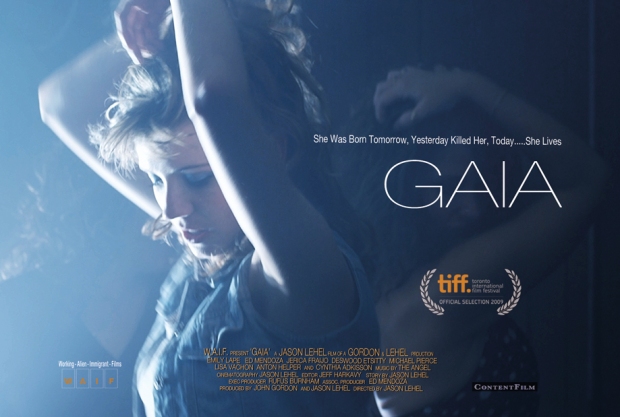The following blog entry is an article I wrote for TheFilmTalk.com in 2010. That site removed all of their content, so I am reposting my articles here.
2010 Nashville Film Festival Reviews
On opening night, I was treated to Nowhere Boy, a biopic about a seventeen-year-old John Lennon and his relationship with his bi-polar mother. The film sold out two large theaters and spilled over into a third. I myself was caught up in the hype, believing that it may break the opening film curse (that being, high-profile low-quality films traditionally open the fest. Last year’s passable 500 Days of Summer the only recent exception.) Unfortunately, Nowhere Boy was clumsy, slow, and overwrought, coasting on the fumes of a legend. The film was introduced by the festival organizers after some crowd-working about Nashville being the best music town in the world (sorry, it’s not). 2 out of 5.
The next two films were much more engaging, yet they drew much-smaller crowds. First up was Catherine Breillat’s Bluebeard, a retelling of the fairy tale about a young girl who is wed to an infamous lord. The film interweaves two modern day girls reading the story. Breillat succeeds again in defying our expectations and doing exactly the opposite of what we expect. She’s one of the few real auteurs working today, and I’m quite pleased NaFF chose to book her new film. 4 out of 5.
Next was the Korean film Vegetarian. A a housewife suddenly develops an obsessive distaste for meat and finds solace in body paint. Yes, really. I’m still processing this engagingly ineffable film, and I don’t quite know what to make of it. But I enjoyed myself throughout the screening, and the images are still in my mind. My rating may change as I get a sense of the aftertaste, but for now: 3.5 out of 5.
Knowing the subject matter, I felt for sure that Michael Nash’s Climate Refugees about the very real effects of climate change was a shoe-in for the Reel Current Al Gore award. The film didn’t win (at least it wasn’t announced at the first screening), and when I finally viewed the film, it was easy to see why. (Update: There was no Reel Current award this year.) The film deals with very serious issues, and I don’t mean to downplay their implications. My problems are with the snail’s-pacing, the choice of interviewees, and the generally educational-film production. I wonder why they would choose to interview Newt Gingrich who acted as if he never tried to downplay global warming (are our memories really that bad?). Why would they choose 911-truther Ed Begley Jr. as a responsible social advocate? And why is the phrase “global warming” never once used in the film? PR moves? You bet. I also wonder why they go through a list of things you can do to help combat climate change without mentioning the two most important: eat less meat and use condoms. I definitely feel they were tailoring the message for their target audience, and indeed in the Q & A they said they were going to screen the film in churches throughout the country. 2.5 out of 5
The Complete Works of Jamie Travis — As the title suggests, this is a collection of shorts by the young Canadian filmmaker Jamie Travis. Comprised of the films Why the Anderson Children Didn’t Come to Dinner, The Saddest Boy in the World, the Patterns trilogy, and The Armoire, the collection is an artfully-designed business card of a director with a big future. Someone in the audience compared him to David Lynch and Guy Madin, and he does occupy the same universe of quirky ineffability; but I see more of Stanley Kubrick in his obsessive-compulsive eye for details. The rooms seem bigger stars than their inhabitants with every detail meticulously designed (Travis also did the production design) from the colorful wallpaper to the knick knacks on the shelves. There’s a lot to wonder about in these movies, but I get the sense that we aren’t meant to cloy for meaning. Rather, like looking at an expressionist painting, we should enjoy without cross examining. Travis himself admitted that he didn’t know why he made one character say a particularly nonsensical line. It just sounded right. And the films feel right. Watch for Travis in the near future. 4 out of 5.
A much prettier-to-look-at documentary than Climate Refugees, Queen of the Sun explores the global bee crisis that threatens extinction of a multitude of species. I enjoyed myself throughout the film, but I grew irritated at the director’s tendency to let a bunch of people give theories and solutions without sorting out the real causes. (To be fair, the causes are not entirely understood.) We’re told about the very likely causes of Varroa mites and migratory beekeeping, but the directors also give air time to Vandana Shiva, who seems hell bent on blaming everything on genetically modified crops. (There is no evidence that GM crops are causing bees to disappear.) The film goes off the rails in the end and stops being about the global bee crisis and becomes a diatribe against big business and GM foods. Mild recommendation. 3 out of 5.
Saturday Night is James Franco’s inside look at the making of an episode of Saturday Night Live, this one hosted by John Malkovich. I enjoyed the film in the same way I would enjoy a backstage pass, but the direction didn’t lift it above anything more than satiated curiosity. I was intrigued at the way extremely funny sketches get progressively less funny as they go from the reading to the taping. 3.5 out of 5.
My first film of day 4 may very well be my favorite thus far: Lourdes, a story about a woman in a wheelchair making a pilgrimage to Lourdes in the Pyrenees Mountains. The filmmakers take no religious position here but simply let the characters speak for themselves. When something possibly-miraculous happens, things get very interesting. Lourdes is an unsentimental film about desire and limitations, hope and reality. 5 out of 5.
The Sound of Insects: Record of a Mummy. I won’t upstage my review in the Nashville Scene but instead will direct your attention to it. 5 out of 5.
Steve James, co-director of Hoop Dreams and director of Stevie (one of my favorite films of all time), appeared on day 5′s The Film Talk. I was able to keep my composure without geeking out too much. We talked a bit about both being graduates of Southern Illinois University. On the show, James talked about his new film No Crossover: Allen Iverson on Trial.
As luck would have it, No Crossover was day 5′s first screening. The documentary explored James and Iverson’s hometown of Hampton, Virginia and it’s reaction to the court case which put the future NBA star behind bars. The sentiments fell largely along racial lines in the town where slave ships first landed on American soil. James reflected on his own possible bias, recalling his own high school basketball days when he fraternized with black players on the court but never invited them into his home. The film is a part of a 30 film series ESPN sponsored to celebrate it’s 30th anniversary. Leave it to James to take an assignment that was supposed to be about profiling a sports icon and turn it into a treatise on bias and identity. 4.5 out of 5.
In the Hong Kong action/crime spectacle Bad Blood, we have all the ingredients of a “must-see.” IMDB’s synopsis states: “When the boss of a ruling Hong Kong triad is arrested and executed in China for counterfeiting money, mayhem ensues as the mob’s leading contenders circle the throne.” Sadly, the enthusiasm disappears when the projector rolls. I found the narrative confusing, the direction clunky, and the entire affair lacking. During the selection process, NaFF might have taken this as an opportunity: “Bad Blood is adequate, but can we do better?” Why not try for the newest Johnnie To film, for instance? (It’s worth noting that the newest Johnnie To picture Fuk Sau stars Sylvie Testud, the enigmatic star of NaFF highlight Lourdes.) Instead, we get brain-dead schedule filler. 2 out of 5.
My first film of day 6 was the Peruvian film Undertow (Contracorriente), which won the audience award for World Cinema Dramatic at the 2010 Sundance Film Festival. I usually walk into audience-award winning films with some suspicion: no film I’ve ever voted for won any festival’s audience award. More often than not, the films that win are just slightly better than ok crowd pleasers with a positive message than inexplicably make fest-goers mark 5′s on their cards. IMDB describes Undertow as, “An unusual ghost story set on the Peruvian seaside; a married fisherman struggles to reconcile his devotion to his male lover within his town’s rigid traditions.” That pretty much says it all, although “ghost story” makes it sound scary or even mildly haunting. Rather, the male lover exists only in the head of the fisherman after he suddenly disappears in the first quarter of the film. Undertow reaffirmed my suspicions of the audience award, and I give it a decent 3 out of 5
It was 8:15pm on day 6, and Gaia was already 30 minutes late for it’s 7:45 show time. The projectionist was having problems with the HD elements — problems which seemed to have cursed Gaia’s first 5 screenings. However, when the film finally began, all bad vibes went away. Photographed on two Red cameras, Gaia is a stunningly-shot meditation on sexual abuse, marginalized cultures, and the fearlessness one acquires when there’s nothing left to lose. Director Jason Lehel offers this synopsis: “A group of Native Americans discover a young woman, left for dead, in the Arizona desert and take her to their reservation. Through her relationship with American Natives she manages to re-connect with her own innocence, but is forced to make a choice between being reborn out of the chaos of her past or dying in the grips of her darkness.” Having gone through some of the tribes’ rituals himself, Jason was able to gain rare access to highly-protective indigenous communities in Southern Arizona. He captured never-before-seen tribal rituals and a disturbing ritual slaughter of a hog that would feed the entire real-life tribe. There is a poetry in Jason’s camera-work that is reminiscent of Terrence Malick and Andrei Tarkovsky. He gleans performances out of his mostly non-professional cast that rivals the direction of Robert Bresson and Roberto Rossellini. Newcomer Emily Lape is absolutely explosive in her first feature performance. She’ll be a star if there is any justice in the world. My only real quibble (and it is a minor one) is that Jason uses too many flashbacks of Emily’s abuse-laden childhood. The point would have been much more effective if 90 percent of the flashback scenes were taken out. Even still, Gaia is a near-masterpiece that marks the arrival of its director and lead actress. 4.7 out of 5.
Because Gaia ended late and because the director invited us out for drinks after the screening, I missed Vampire Girl vs Frankenstein Girl. I hear it’s everything I had hoped Bad Blood to be, and in spades.
An Italian drama starring Tilda Swinton about the love lives of the bourgeoisie offspring of a wealthy textile manufacturer, I Am Love (Lo Sono L’Amore) was the surest, most elegantly composed, most masterful film I saw at NaFF. I’m still thinking about the densely layered plot, involving class, sexual orientation, ethnicity, power, and the forbidden. 5 out of 5.
Hitoshi Matsumoto’s Big Man Japan was the outrageously-entertaining-if-bum-fuddling monster romp of NaFF 2008. I was a little worried that his new film Symbol would succeed and fail in the same ways. Worry not. Symbol is certainly innovative and at times bum-fuddling, but it satisfies; and the ending is thoughtful, touching, and prescient. The film juxtaposes the stories of a Mexican luchador who never takes his mask off and a man (played by the director) trapped in a white room. You’ll wonder what the two stories have to do with each other until a slow-wound punchline intersects them near the end of the film. The man in the white room has to touch levers in the shape of . . . erm . . . cherub penises and testicles . . . in order to activate various deployments, including toothbrushes, sushi, cherub farts, momentary-on doors, etc. The plot could very well be the level design for a video game. I was constantly reminded of Valve’s masterpiece Portal and half-expected a companion cube to drop in. The man subsequently reaches further levels until he faces. . . well, I won’t spoil it for you. Is the cake a lie? You’ll have to watch and see for yourself. 4.5 out of 5.
Starring John C. Riley, Johah Hill, and Marisa Tomei, the Duplas brothers’ Cyrus was by far the comedy highlight of NaFF. Of course, it was the only comedy I saw at NaFF. IMDB plots it as thus: “A down on his luck divorcée finally meets the woman of his dreams, only to discover she has another man in her life – her son. Before long, the two are locked in a battle of wits for the woman they both love-and it appears only one man can be left standing when it’s over.” The film was quite hilarious, but things resolved a little too easily at the end. 3 out of 5.
So there you have it, the 2010 Nashville Film Festival. If you want to read more of my reviews, check out the Nashville Scene’s NaFF guide. Stay tuned next week for “Emerging Genres: The Vital Force Behind Cinema Anima.”
Tony Youngblood is a pretentious film and music snob who produces the experimental improv music blog and podcast Theatre Intangible. His favorite films include Eric Rohmer’s The Green Ray, Abbass Kiarostami’s The Wind Will Carry Us, Ingmar Bergman’s The Magician, Lee Chang Dong’s Oasis, and Rob Reiner’s This Is Spinal Tap.




